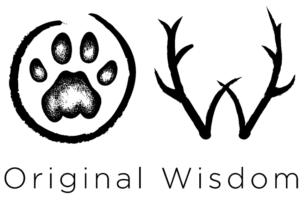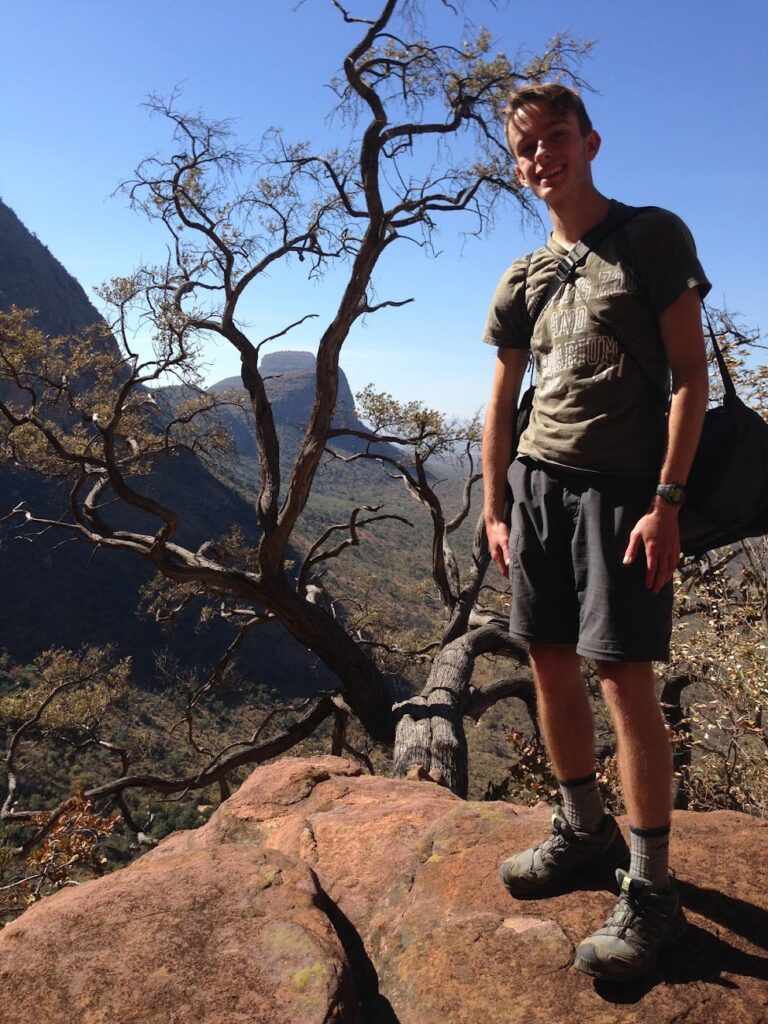Answer Day for 13 – 18 May 2020
Answer list: puff adder (snake) trail from the Republic of South Africa; emerald-spotted wood dove tracks from the Republic of South Africa; pheasant cecal scat from southern England; mourning dove tracks from New England in the USA; white rhinoceros tracks from the Republic of South Africa; a Charops wasp’s cocoon from the Republic of South Africa
Amongst our global efforts to #flattenthecurve, we shared a few tracking photos on our Original Wisdom social media to help pass the time and keep our learning going. We posted a question a day, except for Tuesdays because that’s Answer Day!
The art and science of tracking develops creative and critical thinking skills, and curiosity and empathy, which also help us to better understand our place as caretakers of this beautiful world. The full expression of tracking includes more than just identifying tracks and signs. It also includes the interpretation of behaviours from tracks and signs, and the following and finding of animals (or people) using tracks and signs. Following and finding, or trailing, also builds confidence and leadership qualities in individuals, and teamwork among groups. Tracking requires us to really see the environment, and each other, and to reconnect to fundamental systems of living, which include knowledge of self, and connection to community (including non-human communities) and land. Tracking IS original wisdom. It’s both ancient, and new. Our ancestors tracked animals for food, clothing, shelter, and better quality of life. Today, we push the frontiers of tracking forward by including technology and new discoveries. One of the best things about tracking is that the “book of nature” is so vast that we can never know it all. It’s always exciting and always humbling.
Wednesday, 13 May 2020
Our question today comes from our Ngala Training Camp in the Greater Kruger. Who’s track, and if you can, what direction was it going?
Female Puff Adder Trail Video link to YouTube channel: [embedyt] https://www.youtube.com/watch?v=nLlm-SMsuOI[/embedyt]
Follow this link if it doesn’t open: https://youtu.be/nLlm-SMsuOI
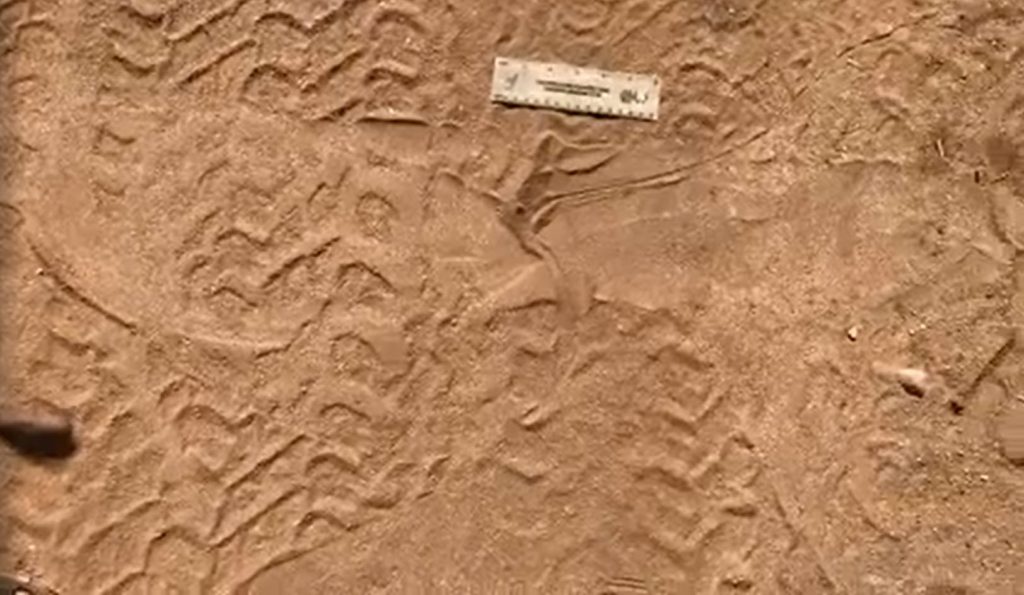
A screen shot of the video posted of a female puff adder trail in South Africa, video by Kersey Lawrence
I tried using a video for today’s question, but from the bush, that didn’t go so well. It posted in some social media forums, and didn’t load in others. So, you can see it here or on our YouTube channel, Tracker Mentoring. The above photo is a blurry screen shot from the video, oriented left to right (the video was going up), but there is enough detail to make an id.
Justene Tedder (Canada), Filip Tkaczyk (USA), Mike Watling (USA), and Dan Gardoqui of Lead with Nature (USA) https://www.leadwithnature.com/ all got that this was a snake, going up in the video (in the photo from left to right). Our guesses included an unknown snake species, Mozambique spitting cobra, and African Rock Python. Of those, an African Rock Python is closest.
This is a female puff adder’s trail. Puff adders are a fat, heavy snake that moves very much like a big python. Although you can’t see it here in the photo (and it would be hard to see in the video), pythons also have rectangular scales that will often show in their trails, but “puffies” don’t. Another feature that stands out to us is the line that seems to drag intermittently forward throughout the trail, and is separate from the push-back ridges, you can see it in the photo under the ruler and going right. This animal has a point to its tail that drags. Female puff adder tails narrow suddenly and dramatically, whereas the males taper more gradually. This narrowing somehow causes the tail tip to drag.
Cool stuff, eh?
Thursday, 14 May 2020
Our question today comes from our Ngala Training Camp in the Greater Kruger. Who’s tracks?
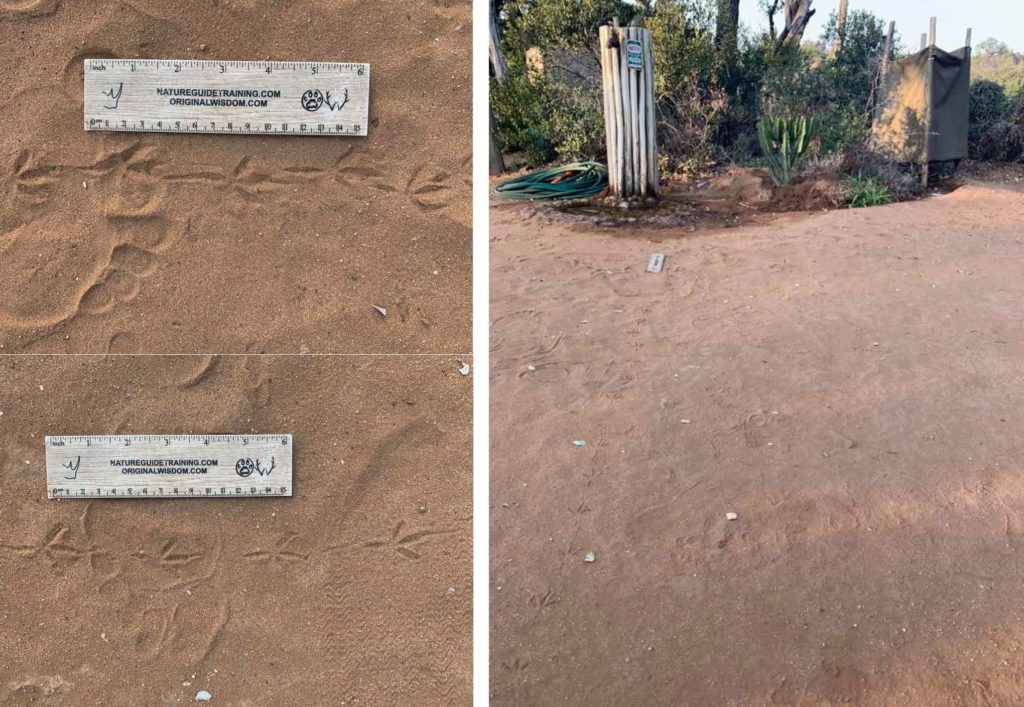
An emerald spotted wood dove’s running trail to water in Ngala Training Camp, South Africa, photos by Kersey Lawrence
A few people attempted this one, which is a common bird and a common track to see on the ground, but the behaviour of the animal in these photos makes it a bit tricky. A few people had some tracker-esc observations that impressed me, even if they didn’t get it quite right (and some did). This is a dove. It’s an Emerald spotted wood dove due to the size of the track (and, it comes to drink at our water tap every sunrise).
Robert Hendrix (USA) observed, “All I can see is a 35mm ground bird that’s thirsty, no tail drag… the bird does seem very aware, familiar and comfortable on the ground though.” Yes, those are great observations, not a ground bird, though. Ground birds tend to have a dot for a hind toe (toe 1 in birds, see the diagram below for toe numbers) that’ usually offset to one side. But, the bird is thirsty… how might that make it move? No tail drag, good, we can rule out things like grey-go-away birds and mousebirds with long tails. The bird is aware and comfortable on the ground. Yes, this bird spends a lot of time on the ground.
Rowan Davies (RSA) added, “My guess is dove, but maybe a bit big. Possibly a pigeon. Dove – final answer.” Haha, yes, Rowan, it’s a dove! The reason it looks a bit big is because it’s thirsty, and running as fast as its short little legs will carry it towards a nice cool drink of water.
Chuggy Charles (UK), “Also dove… preference being a cape turtle…deffo not Namaqua… pigeon toed walk… just a bit disturbed by the straight path… they tend to wander apparently aimlessly in random directions.” Absolutely, when they aren’t on a mission, they wander. This one is picking up speed!
Justene Tedder (Canada), “Running bird track – towards the water and potential food source… not a dove but it could be a starling! I’m trying to think what birds would walk/run vs hop around a camp like this…. it’s not a francolin track-not a dove -they wander…. starling for me is the next best guess.” Great guess! Kyle de Nobrega (RSA) also thought that this could be a starling. But that hind toe looks long because the bird is dragging it as it runs. Looking closely, that hind toe is a different length in almost every track, isn’t it, which is one indication of dragging, so you won’t get an accurate measurement on it. In the photo with the feet closer together, you can see the widely spread toes of a dove, and that almost “pigeon toed” gait that Chuggy mentioned, above. Starling toes tend to be thinner, and longer, and that hind toe is very long.
Mike Watling (USA) added, “These look similar to a rock dove w/a wide spread of toes 2 and 4 and the gait is a walk. My answer is from bird the Columbidae family walking to the water source.” Yes! That equal spread of toes, and the angle between toes 2 and 4 (see the diagram below for toe numbers) being about 90 degrees angle from each other leads to Columbidae. Doves tend to walk most of the time, and their legs are so short that any increase in speed must be a run to get the momentum to move that body mass, lol, but this one is moving quickly, whether you call it a fast walk or a run.
FYI, from Lee Gutteridge’s new book, Birds of Southern Africa and Their Tracks and Signs (2020), doves which we do have measurements for are:
Namaqua dove, 2.7 – 3.1 cm
Emerald spotted wood dove, 4 cm
Cape turtle dove, 5 cm
African mourning dove, 5.5 cm
Red-eyed dove, 6 cm
Rock dove (feral pigeon), 6.5 cm
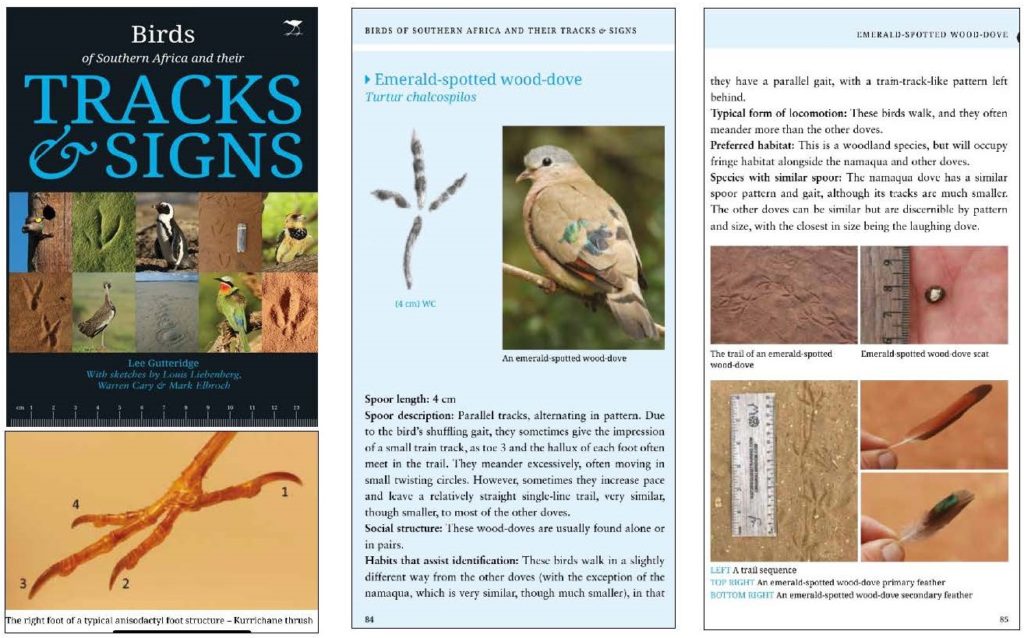
The cover of Lee Gutteridge’s new book, Birds of Southern Africa and Their Tracks and Signs (2020), along with the Emerald-spotted wood dove pages, and a diagram of the toe numbering for “regular birds, which we call an anisodactyl foot structure. Toe one is the rear-facing toe, then the numbering continues to the inside of the foot (the foot pictured is a right foot) and goes around and out.
Friday, 15 May 2020
Our question today comes from John Rhyder, a CyberTracker Senior Tracker in Southern England and Owner of the Woodcraft School https://www.woodcraftschool.co.uk/. Who’s scat?
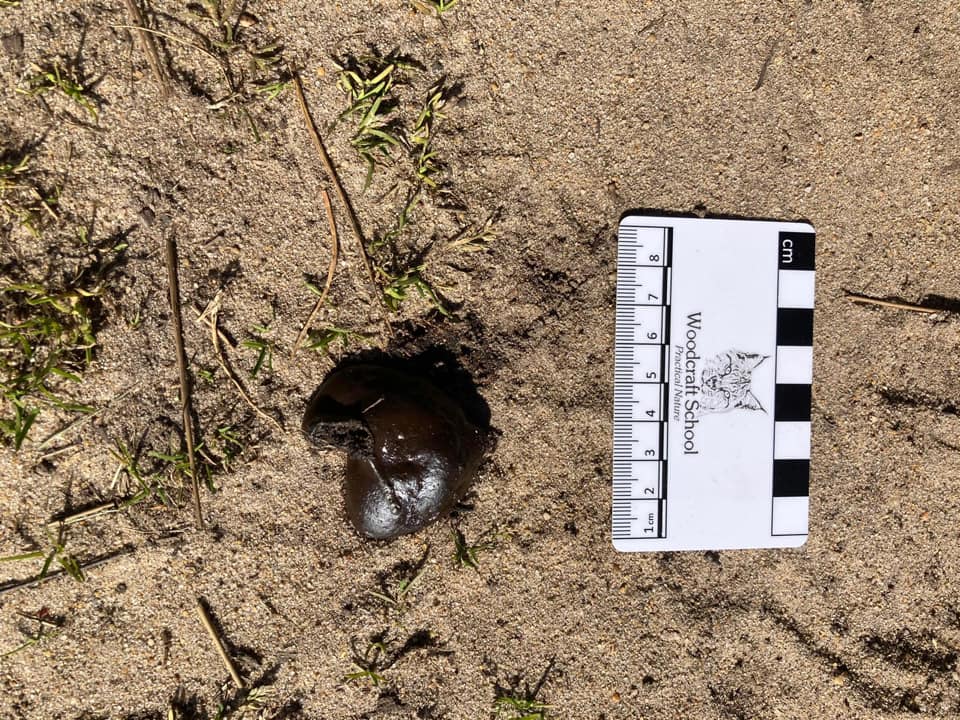
The cecal scat of a pheasant in Southern England, photo by John Rhyder
Justene Tedder (Canada) came the closest on this one, with, “At first look I wanted to say goose – liquidy dark green – but there’s no white uric acid…” Upon further questioning, she admitted that birds don’t always have that white uric acid splash, or whitewash, as we call it. There are some circumstances where we don’t see it.
Mike Watling (USA), used some great logic, “Hurt my brain…final answer…fallow deer scat. I don’t see any insect parts, fruits or berries nor do I see undigested grasses. So, if this was a deer scat it would be from fresh greens that are sprouting now. I think I see outlines of pellets would be stuck together by the moisture content of the scat. Plus, I see what looks like a partial track on the lower right.” Mike’s right that deer scat can glom together when they are feeding on spring greens, making it appear blobby instead of pellets. I included his answer because it’s good use of rationalization.
But, this is a bird scat.
John Rhyder, the photographer, and a Senior Tracker in England, shares with us that the size and location puts this squarely into the pheasant id. “In this part of the world it’s our biggest game bird. This was found in dry, sandy heath. I guess the only thing to confuse it with would be a chicken but there are no nearby houses.”
From the Tracks and Signs of the Birds of Britain and Europe, an Identification Guide, by Roy Brown, John Fergeson, Michael Lawrence, and David Lees (1987): “If a bird rests in one place for a long time, then the faecal contents of the ceacal appendages are voided after all the fibrous material in the gut has been passed. Such droppings are semi-liquid, and dark in color… If a bird has rested overnight, normal and caecal faeces will be found together.”
Saturday, 16 May 2020
Our question today comes from the New England area of the USA. Who’s tracks?
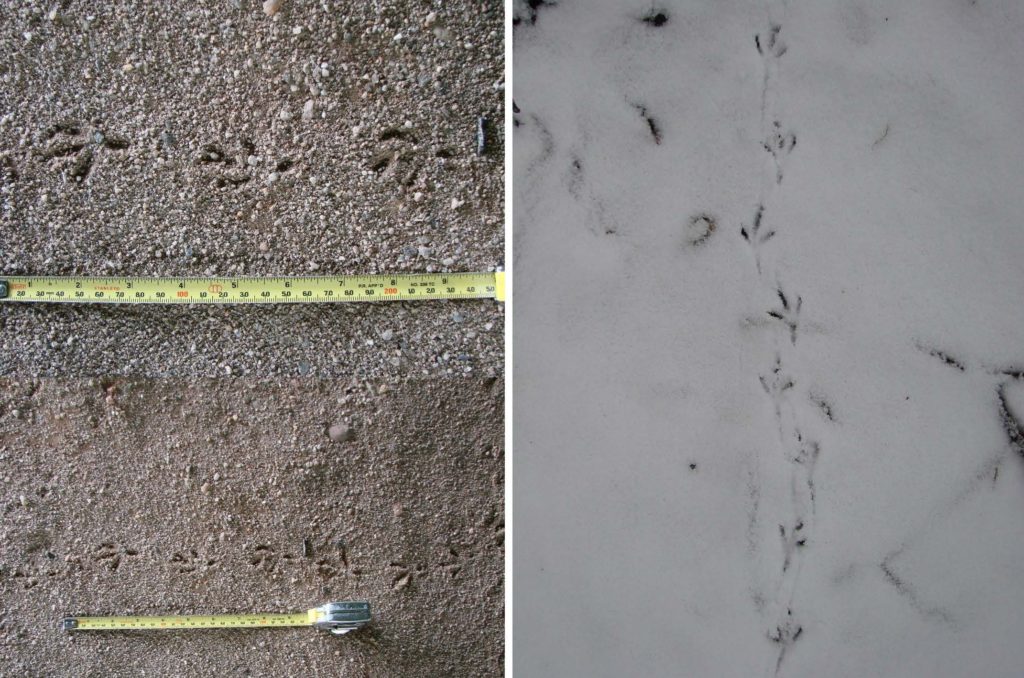
Mourning dove tracks in two different substrates from New England in the USA, photos by Kersey Lawrence
Chuggy Charles (UK) and Justene Tedder (Canada) both got dove for this one, and it is a mourning dove! Chuggy mentioned the pigeon-toed waddle, and Justene reiterated the pigeon-toed slant.
In New England, mourning doves are really our only dove species around. There are pigeons, too, but their tracks are bigger and often associated with human infrastructure. Doves and pigeons spend a lot of time wandering around on the ground, and their trails often meander, creating a lacy-looking pattern.
In Mark Elbroch’s and Eleanor Mark’s Bird Tracks and Signs of North America (2001), mourning dove tracks are 4.1 – 4.7 cm long (1 5/8 – 1 7/8 in), and 2.5 – 3.2 cm wide (1 – 1 ¼ in), with a walking stride of 5.1 – 11.5 cm (2 – 4 ½ in).
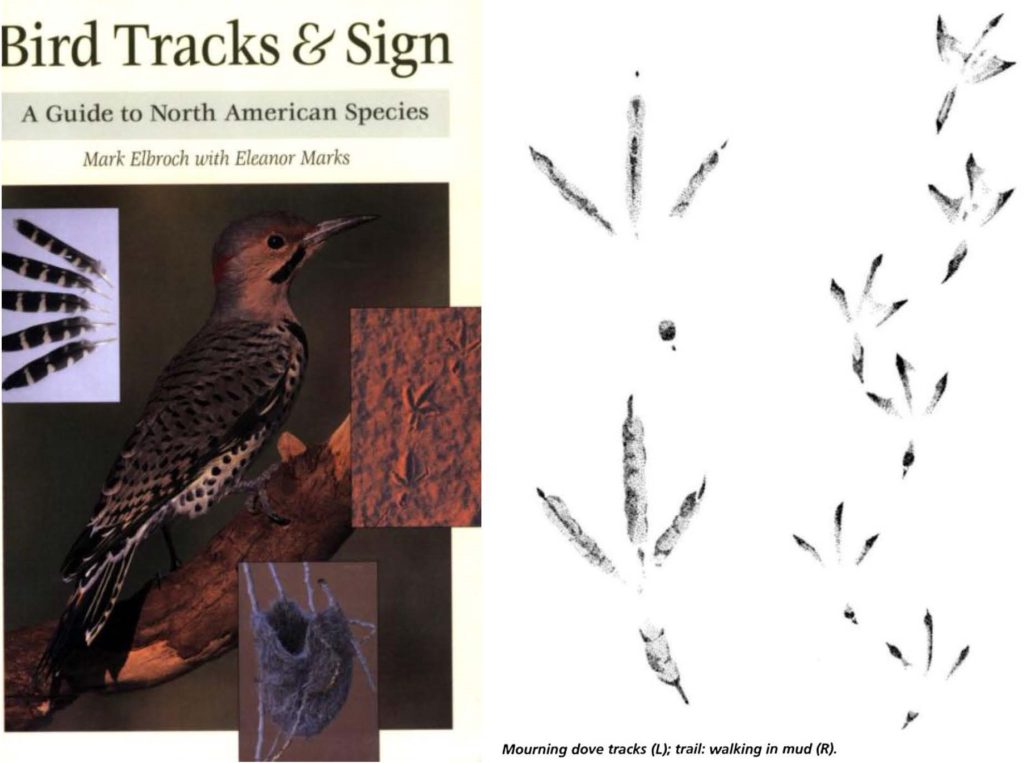
The cover of Mark Elbroch’s Mark Elbroch’s and Eleanor Mark’s Bird Tracks and Signs of North America (2001), and their illustration of classic mourning dove tracks.
Sunday 17 May 2020
Our question today comes from the Republic of South Africa (RSA). Who’s tracks? In addition to an identification, can you tell us something important about the species, internationally? 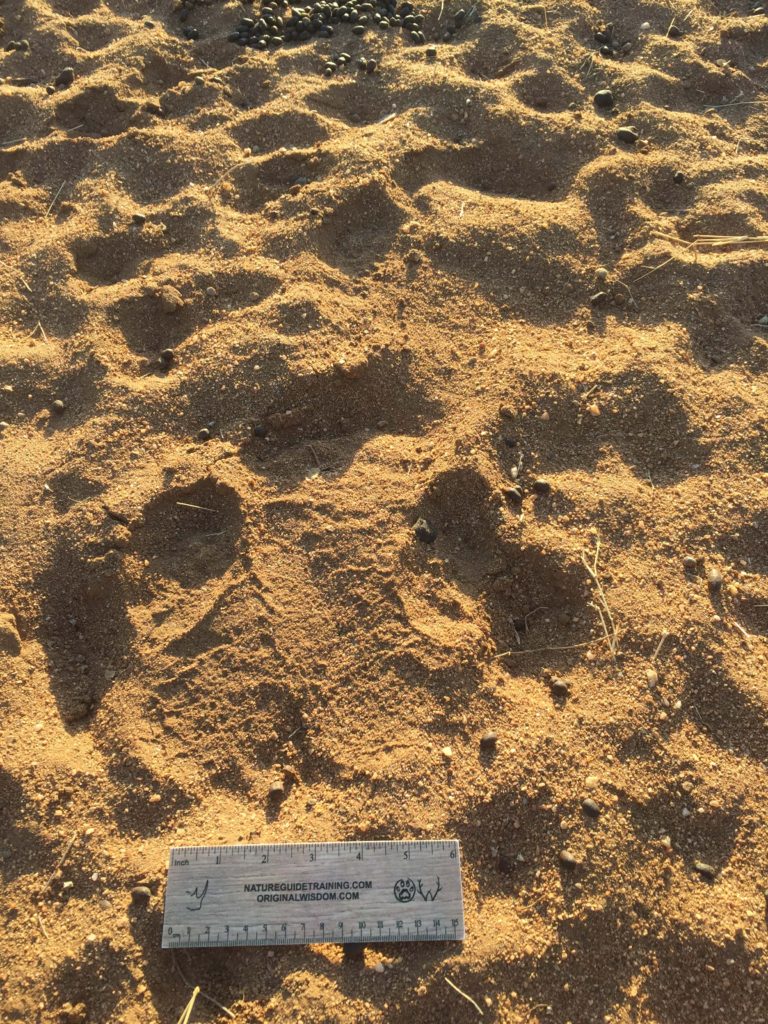
White rhinoceros tracks in South Africa, photo by Kersey Lawrence
This was super cool, because some folks had absolutely no frame-of-reference to hang this on, and learned something new! Like Mike Watling (USA), “Until I read the comments, I had no idea that this a white rhino and nothing from NA to draw upon for inspiration. Something brand new to log into my tracking file. For my reference, the animal is walking away from ruler. Is that a left front?”
Sam Enoch (India) even gave it a shot, “Rhino track… I can’t tell the subspecies since I’m from India and am used to seeing Indian Rhino tracks.” Hey, Sam, I’d love to see photos of Indian rhino. Why don’t you send some as a future question for us?
Then, we were split between the white rhino camp and the black rhino camp:
White rhino – David Kennedy (USA), Justene Tedder (Canada), Chuggy Charles (UK)
Black rhino – Valentin Lavis (RSA), Pete Fletcher (UK)
So, these are white rhino tracks, but I gave you a terrible photo to discern that from and didn’t realize it until the answers started coming in. In that respect, choosing photos for these daily tracking challenges is a lot like choosing questions for a track and sign evaluation. I know what it is, so I assume that all the features are there, then… oops, the photo was on an angle, which distorts the size and features. I should have given one from straight down. Anyway…
These are big, much bigger than a black rhino’s tracks. Bigger even than a big, black rhino bull. The clear track is a hind foot, and since the toe on the left side is lower down than the one on the right side (rhinos have 3 toes, two side toes and one central, in front) that makes this a left hind foot. Then, the front foot is ahead of that, in the photo, towards the top. Rhinos don’t typically overstep unless they pick up speed.
Justene mentions the “marked W at the caudal edge and the large rectangular size. The black rhino has a more rounded appearance.”
Chuggy and Valentin further mention the CITIES status of these animals, endangered for black rhino, and even though the white rhino is not listed (yet) they are being poached to death for their horns.
There is a “war” going on in Africa, where poachers are illegally killing all rhinoceroses for their horns in brutal ways and at a rate that is much faster than rhinos can replace themselves and than anti-poaching units can prevent, apprehend, and bring to prosecution. A rhino dies every 8 hours in Africa, because it’s horn, which is made of keratin like your fingernails, is thought to cure cancer in Chinese traditional medicine (it doesn’t, and has been medically proven not to), and there is a huge, profitable, illegal, heartless, business revolving around their brutal slaughter. Stroop is an amazing movie on YouTube about the plight of rhinos, but very sad, and long. It’s about 2 hours and 20 minutes, so plan accordingly. The movie is intended to raise awareness about the huge problem that exists for rhinos, and some of the facets of it. At the rate they are being poached, rhinos will be functionally extinct in the wild within 10 years, and yet most of the world is blissfully unaware of the problem.
Monday 18 May 2020
Our question today comes from the Republic of South Africa (RSA). Who’s sign? In addition to an identification, can you tell us something about it?
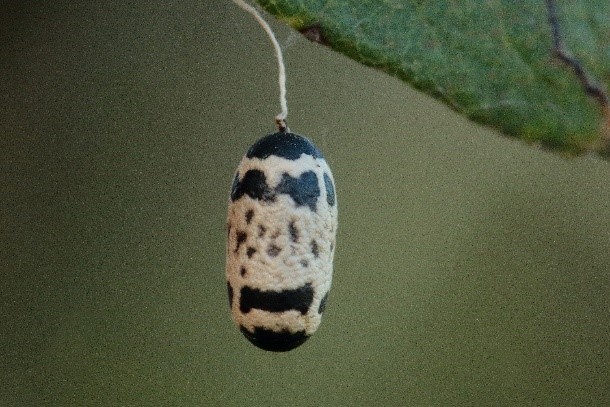
A Charop’s wasp cocoon in South Africa, photo by Lee Gutteridge
Both Elle van Dijk (Netherlands) and Alison Drake (RSA) got this one.
Elle said, “Beautiful to see… I’ve seen this kind of cocoon on a picture from someone from here, but then with different colors. We tried to identify it. It was some kind of Ichneumon wasp. So this could be from an ichneumon wasp. I don’t know which one.”
Alison Drake (RSA), “Wasp cocoon, in Bushveld by Lee Gutteridge.”
It’s actually in the family Braconidae, and a Charops wasp cocoon, which can be seen in Lee Gutteridge’s book, Invertebrates of Southern Africa and Their Tracks and Signs (2017), pictured below.
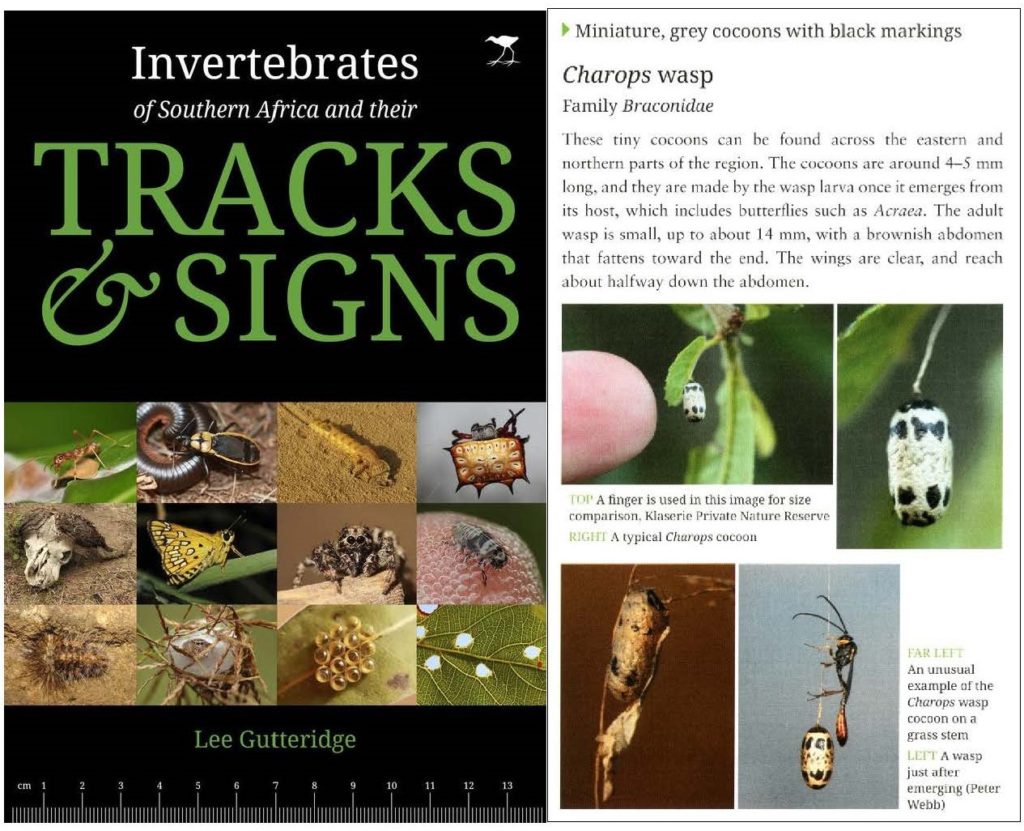
The cover of Lee Gutteridge’s book, Invertebrates of Southern Africa and Their Tracks and Signs (2017), and the page on Charops wasp cocoons.
Thanks to everyone who participated. Let’s keep learning together! If you have photos (with an explanation that you’d like to contribute), please contact me at kersey@originalwisdom.com – your contributions will be credited to you.
HEADS UP!
Even though we aren’t out of the proverbial “woods” yet with this coronavirus pandemic, I need to start transitioning away from a #DAILYTRACKINGCHALLENGE. While I’ve enjoyed the interaction and the learning very much, it takes a lot of time to do this, and is difficult to do from the bush with limited wifi. Therefore, in mid-June, after Week 10, we will be transitioning to a one-question-a-week format, on #TrackerTuesdays, and the answers will be published on the first Tuesday of every month in our Newsletter.
#dailytrackingchallenge #trackertuesdays #trackingisoriginalwisdom, #natureguidetraining, #cybertracker, #trackercertification, #trackermentoring, #alwaystracking, #environmentaleducation, #ecologicalliteracy, #ecologicalintelligence #wildlifetracking, #animaltracking, #tracksandsigns, #systemsthinking, #ecology, #nature, #science, #conservation, #sustainability, #resilience, #adaptation #thinkinglikeamountain #weareallconnected #BeMoreNeedLess #trackinginafrica #greaterkruger
Download our recommended reading list for trackers by signing up for our “News for Trackers” newsletter!
Our goal is NOT to be spammy with our newsletter. We’d just like to send occasional updates on upcoming programs and maybe some cool info on wildlife, people, and tracking!
Once the sign-up form has been submitted, you will be re-directed to the download page.
Download our recommended tracking book list (and some other resources). It’s specific to Southern Africa and North America, but, a good tracking book is helpful in any region as a starting point to learn how to look at track morphology and animal behavior.
[contact-form-7 id=”2892″ title=”Subscribe to the newsletter”]
